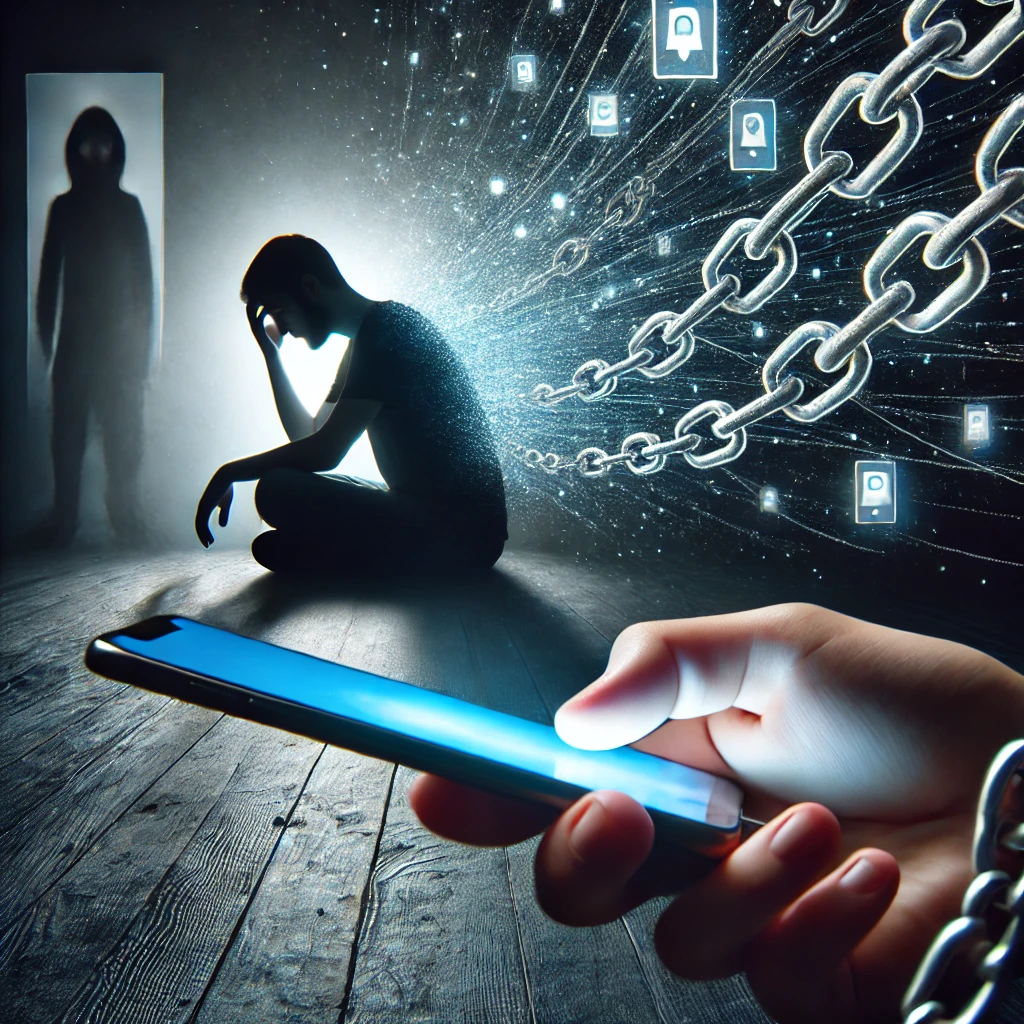Introduction
Technology has revolutionized how we work, communicate, and entertain ourselves. However, the excessive use of digital devices has given rise to technology addiction, a growing concern linked to mental health issues such as depression, anxiety, and social isolation. Studies indicate that prolonged screen time, social media overuse, and online gaming addiction can contribute to mental health decline, affecting emotional well-being and cognitive function.
This article explores the relationship between technology addiction and depression, its causes, symptoms, and effects on mental health, and how individuals can find a balance between digital engagement and psychological well-being.
What is Technology Addiction?
1. Defining Technology Addiction
Technology addiction, also known as digital addiction or internet addiction disorder (IAD), is a condition where individuals experience compulsive use of digital devices despite negative consequences on their mental and physical health.
Common forms of technology addiction include:
- Social Media Addiction: Excessive engagement on platforms like Instagram, TikTok, and Facebook.
- Online Gaming Addiction: Prolonged gaming sessions leading to neglect of responsibilities.
- Smartphone Dependence: Constant checking of notifications, texts, and emails.
- Streaming and Entertainment Addiction: Binge-watching TV shows and videos without moderation.
2. Why is Technology Addictive?
Technology addiction is driven by psychological mechanisms that reinforce compulsive behaviors:
- Dopamine Release: Social media likes, messages, and gaming rewards trigger dopamine production, similar to gambling and drug addiction.
- Fear of Missing Out (FOMO): Anxiety over missing updates, trends, or online interactions leads to excessive checking of devices.
- Instant Gratification: The internet provides quick rewards and stimulation, making it difficult to disengage.
The Link Between Technology Addiction and Depression
1. Increased Screen Time and Mental Health Decline
Studies show that individuals who spend excessive time online are more likely to experience depressive symptoms. Prolonged use of digital devices may result in:
- Disrupted Sleep Cycles: Blue light exposure suppresses melatonin production, leading to insomnia and mood disturbances.
- Reduced Physical Activity: Excessive screen time replaces outdoor activities, increasing the risk of depression.
- Social Isolation: Online interactions may replace in-person relationships, leading to loneliness.
2. Social Media and Depression
Social media platforms are designed to maximize engagement, but their impact on mental health is concerning:
- Comparison Culture: Viewing curated content of others’ lives can lead to low self-esteem and depressive symptoms.
- Cyberbullying and Online Harassment: Negative online experiences can contribute to stress, anxiety, and emotional distress.
- Validation Seeking: Relying on social media for external approval can increase vulnerability to depression.
3. Gaming Addiction and Mental Health Issues
Online gaming addiction is associated with:
- Increased Anxiety and Depression: Players may experience withdrawal symptoms when unable to game.
- Impaired Social Skills: Gaming may replace face-to-face communication, affecting emotional intelligence.
- Escapism and Stress Relief: While gaming offers temporary relief, excessive play can worsen mental health.
4. Digital Overload and Cognitive Function
- Reduced Attention Span: Constant notifications and information overload lead to difficulty focusing.
- Memory Impairment: Excessive multitasking weakens short-term memory and retention.
- Emotional Numbness: Overexposure to digital content may lead to desensitization and decreased emotional responsiveness.
Symptoms of Technology Addiction and Depression
1. Signs of Technology Addiction
- Excessive screen time with difficulty reducing usage.
- Neglecting personal responsibilities due to technology use.
- Restlessness or irritability when unable to access digital devices.
- Difficulty maintaining real-world relationships.
2. Symptoms of Depression Linked to Technology Use
- Persistent feelings of sadness, emptiness, or hopelessness.
- Loss of interest in activities once enjoyed.
- Sleep disturbances (insomnia or excessive sleeping).
- Fatigue and difficulty concentrating.
- Changes in appetite and weight.
- Social withdrawal and isolation.
Strategies to Overcome Technology Addiction and Reduce Depression
1. Digital Detox and Screen Time Management
- Set screen time limits using apps like Screen Time (iOS) and Digital Wellbeing (Android).
- Take regular breaks from screens with the 20-20-20 rule (every 20 minutes, look at something 20 feet away for 20 seconds).
- Establish tech-free zones at home, such as the bedroom and dining area.
2. Mindful Social Media Usage
- Unfollow toxic accounts that contribute to negative self-comparison.
- Limit social media use to designated times each day.
- Engage in positive online communities that support mental well-being.
3. Encouraging Real-Life Social Connections
- Prioritize face-to-face interactions over digital conversations.
- Join hobbies or social groups that do not involve screens.
- Practice active listening and being present in conversations.
4. Improving Sleep Hygiene
- Limit screen exposure before bedtime to enhance sleep quality.
- Use blue light filters on devices to reduce melatonin disruption.
- Maintain a consistent sleep schedule to support mental health.
5. Engaging in Physical Activity and Outdoor Time
- Exercise releases endorphins, reducing stress and depression.
- Spend time in nature to improve mood and mental clarity.
- Practice mindfulness and meditation to enhance self-awareness.
6. Seeking Professional Help
- Therapy and counseling can provide personalized strategies to manage technology addiction and depression.
- Cognitive Behavioral Therapy (CBT) is effective for breaking compulsive tech habits.
- Support groups and mental health resources can offer guidance and encouragement.
The Future of Technology and Mental Health
1. Advancements in Digital Well-Being Tools
Tech companies are introducing AI-driven wellness features, such as:
- Screen time reminders and focus modes.
- Mental health chatbots and support apps.
- Parental controls for balanced digital usage.
2. Research on the Psychological Effects of Technology
Scientists continue to explore:
- The long-term impact of screen time on mental health.
- How AI and virtual reality influence emotions and cognition.
- The role of digital interventions in treating anxiety and depression.
3. Balancing Technology and Mental Well-Being
- The goal is to integrate technology responsibly into daily life.
- Future solutions may focus on harm reduction, not complete avoidance.
- Digital literacy programs can help individuals develop healthy tech habits.
Conclusion
Technology addiction is a growing issue with serious implications for mental health and emotional well-being. While digital devices offer numerous benefits, excessive use can lead to depression, anxiety, and social isolation. By adopting mindful technology habits, limiting screen time, and prioritizing real-life interactions, individuals can mitigate the negative effects of digital dependence.
As society becomes increasingly digital, it is essential to strike a balance between technology use and mental health. With continued research and awareness, we can create a healthier relationship with technology and promote psychological resilience in the digital age.









+ There are no comments
Add yours